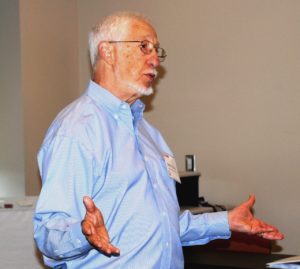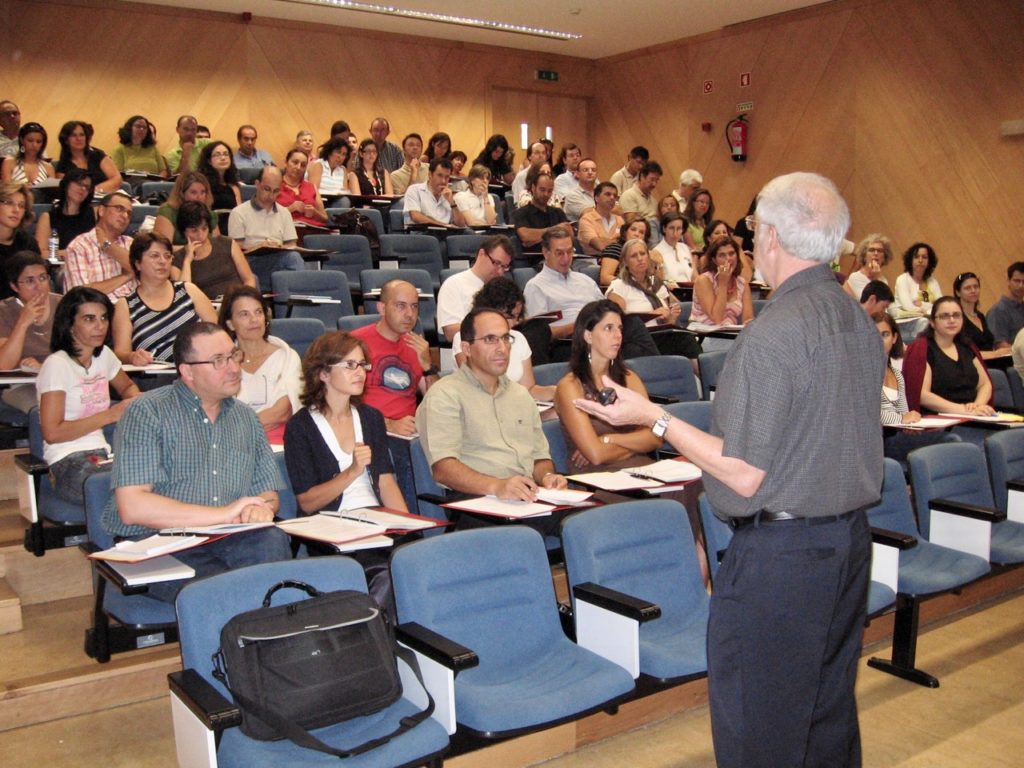 Everybody—ok, almost everybody—loves a good story. Parents learn quickly that if they want to entertain their children or settle them down, reading them a story is a surefire way to do it, even if (and sometimes especially if) the children have heard the story often enough to have it memorized word for word. Teachers in early childhood education all know that too, and they use it in their classes. They may have trouble getting their students to pay attention to multiplication tables and spelling, but let them start telling a good story and bang, those kids are with them!
Everybody—ok, almost everybody—loves a good story. Parents learn quickly that if they want to entertain their children or settle them down, reading them a story is a surefire way to do it, even if (and sometimes especially if) the children have heard the story often enough to have it memorized word for word. Teachers in early childhood education all know that too, and they use it in their classes. They may have trouble getting their students to pay attention to multiplication tables and spelling, but let them start telling a good story and bang, those kids are with them!
The power of stories to capture attention continues into adulthood. Once when Rebecca was an education professor, I sat in on her class on children’s literature. I arrived a little late, getting there while she was reading “Owl Moon” to her class of third-year college students. I looked in the doorway and saw a class of five-year-old children in 21-year-old bodies. They were leaning forward in their seats, all eyes on Rebecca, many with mouths open, hanging on every word. It was fascinating. Then I found a seat in the back and in a couple of minutes I was just another five-year-old.
I’ve told lots of stories in my teaching, using them either to illustrate things I was teaching or to motivate the students’ interest in learning those things. The stories got high marks in my ratings and I always felt that they were helping the students learn, but it was just that—a feeling. Until recently, if you asked me for proof I might have mumbled something vague about links between active engagement and learning, but I wouldn’t have been able to produce explicit support for the educational value of stories.
A few days ago, however, I found some. First, a little oversimplified cognitive science. “Learning” involves transferring perceived information (such as lecture content) from working memory to long-term memory, from which it can later be retrieved and used. The primary basis for the brain’s decision to either store something in long-term memory or discard it is the learner’s prior associations with the information, especially emotional associations. The stronger and more numerous the associations, the more likely the new information is to be stored [1, pp. 2–3; 2, Ch. 3].
So what does all that have to do with stories? A recent blog post (“Write and don’t stop”) by the neurosurgeon Dr. David Hanscom has the answer. It cites research showing that presentation of information either directly (such as in readings and lectures) or in stories activates two centers in the brain that help make meaning out of words (the Broca’s and Wernicke’s areas), but stories also stimulate other areas of the brain that would be active if the listener were actually experiencing the events the stories describe. If a story refers to an action like kicking or running, the brain’s motor cortex lights up, and if the story mentions a visual image or sound or physical sensation, the corresponding sensory processing area of the brain is activated. Scientists have also found that a story can plant ideas, feelings, and emotions into listeners’ brains. In one study, the brains of a woman telling a story and of her listener were monitored, and as the story progressed the two brains went into sync with each other!
Those results don’t prove that if you go into your class and tell random stories you’ll see the learning you’re looking for. Reciting Owl Moon in your computational fluid dynamics class, for example, would probably not help the students make sense of the Navier-Stokes equations. The research suggests, though, that if you tell a story linking something you plan to teach to things the students are likely to know and—more importantly—care about, their physical, sensory, and emotional responses to the story can increase the odds that they will store what you teach in their long-term memories…which is to say, they’ll learn it!
OK, if Owl Moon is out, what kind of stories can you tell in a STEM course that might facilitate learning? The possibilities are infinite. Tell about important inventions or discoveries or familiar phenomena or devices that your course will explain. Tell about mistakes and lessons learned the hard way that what you’re getting ready to teach may help your students avoid— course-related stories of bridges and buildings collapsing, environmental catastrophes, satellites crashing on planets instead of going smoothly into orbit around them, ethical dilemmas, multibillion dollar lawsuits, and so on. You can find such stories in newspapers and journals like Scientific American, case study collections like the one at the National Center for Case Study Teaching in Science, YouTube videos, and websites like How stuff works, How everything works, and Everyday engineering examples.
Besides helping students learn technical course content, stories can be used to steer them toward behaviors and attitudes that can help them succeed both in school and after they graduate. Rebecca and I put stories like that aimed at both students and instructors in Teaching and learning STEM [1, pp. 13, 17, 107, 131, 151, 187, 213, and 243]. Many of the stories include dialogues among hypothetical students that illustrate different strengths, weaknesses, and behavior patterns we want our readers to know about. If the readers recognize themselves and/or (if they are teachers) their students in the stories, we hope—and believe—that some will be motivated to consider the recommendations that follow the stories. You are welcome to share any of the stories with colleagues and students or to use them as models for stories of your own.
When possible, draw stories from your own experience, especially if you ever worked on projects and problems like the ones your students are likely to encounter after they graduate. Most students are worried that when they get out in the real world they’ll find that they haven’t been adequately prepared by school. If you can occasionally say, “Look, what it says in the book is ok as far as it goes, but let me tell you about something I once ran into that’s not in the book,” they’ll be all ears and grateful to you for the inside information.
In short, a well-chosen story is a pedagogical triple threat. It has the potential to promote technical knowledge acquisition and skill development, foster attitudes that favor academic and professional success, and provide practical career guidance well beyond what students normally get from conventional lectures and textbooks. Seems worth trying, doesn’t it?
References
1. Felder, R.M., and Brent, R. (2016). Teaching and learning STEM: A practical guide. (San Francisco: Jossey-Bass).
2. Sousa, D.A. (2011). How the brain learns (4th ed.). Thousand Oaks, CA: Corwin Press.
Please follow and like us:
 When Instructors start using active learning in a class of students who aren’t used to it, the students generally don’t all welcome it, and some may be resistant or downright hostile to it. A key to defusing the resistance is to give them some advance preparation.
When Instructors start using active learning in a class of students who aren’t used to it, the students generally don’t all welcome it, and some may be resistant or downright hostile to it. A key to defusing the resistance is to give them some advance preparation.





